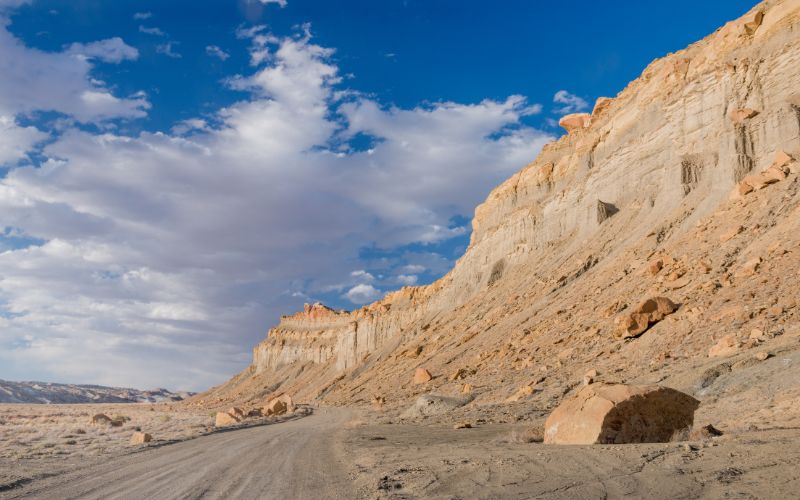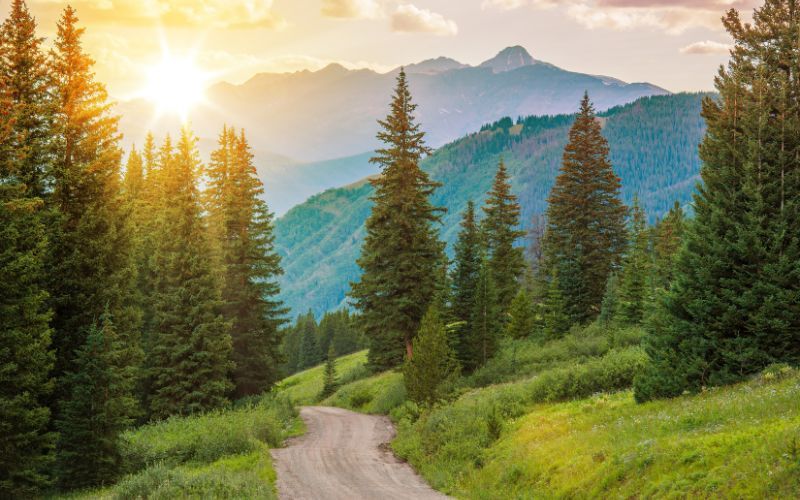Backcountry Travel: Exploring the Untamed Super Wilderness 2023
Backcountry Travel – In the hustle and bustle of our modern lives, where cityscapes sprawl and technology connects us to the farthest corners of the globe, there remains an untouched realm—a sanctuary where nature reigns supreme. This realm, known as the backcountry, is a living testament to the wild and untamed forces that have shaped our planet for eons. Here, the cacophony of urban living gives way to the symphony of the natural world.

Table of Contents – Backcountry Travel
An Escape from the Concrete Jungle
The backcountry is an antidote to the concrete jungles that dominate our urban landscapes. It’s a world apart, where the relentless pace of city life is replaced by the gentle cadence of nature. In the backcountry, you won’t find skyscrapers or traffic jams, but rather the towering majesty of ancient forests, the soothing rush of pristine rivers, and the breathtaking vistas of rugged mountain peaks.
This wilderness is a place of solace and respite—a refuge where adventurers seek to escape the trappings of modernity. It offers an opportunity to disconnect from the digital noise, to trade the glow of screens for the brilliance of starlit skies, and to rediscover a simplicity often forgotten in our fast-paced lives.
A Playground for Explorers
For those with an adventurous spirit, the backcountry is an expansive playground waiting to be explored. Its vastness stretches as far as the eye can see, offering an open invitation to traverse its trails, paddle its waterways, and ascend its peaks. Each journey into the backcountry is a unique odyssey, a chance to chart uncharted territory, and an opportunity to discover hidden gems in the heart of the wilderness.

Whether it’s embarking on a multi-day backpacking trek, paddling through remote lakes, or scaling challenging rock faces, the backcountry presents a diverse array of adventures. It’s a place where the terrain varies from dense forests to stark desert landscapes, from tranquil meadows to turbulent whitewater rapids. Every step, every paddle, and every climb is a testament to the wonders of nature and the resilience of the human spirit.
A Canvas for Immersion in Nature’s Beauty
The backcountry serves as a canvas for those who yearn to immerse themselves in the unspoiled beauty of the great outdoors. Here, the artistry of nature is on full display—a masterpiece painted with vibrant wildflowers, sculpted by cascading waterfalls, and illuminated by the golden hues of sunrise and sunset. It’s a place where the senses awaken to the fragrant aroma of pine forests, the soothing sounds of babbling brooks, and the feel of cool, crisp mountain air.
For photographers, artists, and nature enthusiasts, the backcountry is a never-ending source of inspiration. It offers a front-row seat to the ever-changing tableau of the natural world. From capturing the dance of sunlight on alpine lakes to sketching the intricate details of wild creatures, the backcountry ignites creativity and fosters a profound connection with the environment.
In summary, the backcountry is not just a destination; it’s an invitation to rediscover the untamed spirit within ourselves. It’s a realm where nature’s grandeur takes center stage, where adventure beckons at every turn, and where the soul finds solace in the simplicity of the wild. As we venture deeper into this wilderness, we unearth treasures not found on any map—the treasures of self-discovery, of unbreakable bonds with fellow adventurers, and of a deep and abiding love for the untamed beauty of our planet.
Introduction: The Allure of the Backcountry Travel
The allure of the backcountry is a siren song that beckons those with an adventurous spirit. It’s a realm where modern comforts fade away, and the primal essence of the wilderness takes center stage. Backcountry travel, often synonymous with remote and off-grid exploration, offers an escape from the hustle and bustle of daily life, a chance to unplug, and an opportunity to reconnect with nature in its purest form!!
The Backcountry Defined
But what exactly is the backcountry? It’s a term often used to describe remote, undeveloped, and less-traveled areas, typically far from the amenities of civilization. In the backcountry, you won’t find well-paved roads, bustling cities, or even the convenience of cell phone reception. Instead, you’ll encounter rugged terrain, pristine landscapes, and a sense of solitude that is increasingly rare in our interconnected world.

Backcountry travel encompasses a wide range of activities, from backpacking through dense forests to embarking on multi-day canoe trips down winding rivers. It includes hiking in the high alpine, setting up camp beneath a star-studded sky, and venturing into territories where few have trodden before.
The Call of Adventure
What draws people to the backcountry? It’s the call of adventure—the desire to explore uncharted territories, to test one’s limits, and to embrace the unknown. It’s a yearning for self-discovery and a quest to find solace in the raw and unfiltered beauty of nature. In the backcountry, the ordinary transforms into the extraordinary, and the mundane is replaced by the extraordinary.
Backcountry travel offers more than just physical challenges; it provides mental and emotional rewards that are equally profound. It’s an opportunity to step outside one’s comfort zone, to confront fears, and to find resilience in the face of adversity. It’s a chance to disconnect from the constant noise of modern life and to listen to the quiet wisdom of the wilderness.
The Untamed Wilderness Awaits
The untamed wilderness of the backcountry is a testament to the power and beauty of the natural world. Towering mountains, dense forests, crystal-clear lakes, and meandering rivers are the backdrop for backcountry adventures. These landscapes are not just scenery; they are living ecosystems that teem with life, from the smallest insects to the mightiest predators.
In the backcountry, you’ll witness the intricate dance of nature—the predator and prey, the changing seasons, and the delicate balance that sustains life. It’s a chance to witness the wonders of the animal kingdom, from the elusive tracks of a mountain lion to the graceful flight of an eagle soaring overhead.
Backcountry Travel: Preparing for the Journey – Backcountry Travel
Before embarking on a backcountry adventure, preparation is key. Unlike more accessible destinations, the backcountry demands a higher level of self-sufficiency and awareness. Here, we delve into the essential aspects of preparing for a journey into the untamed wilderness.

Gear and Equipment – Backcountry Travel
Backpack: A reliable backpack is your lifeline in the backcountry. It should be large enough to carry essential gear, but not so large that it becomes unwieldy. Look for one with comfortable straps, ample compartments, and sturdy construction.
Footwear: Proper footwear is paramount. Invest in high-quality hiking boots or shoes that provide support, grip, and protection for your feet. Break them in before your trip to avoid painful blisters.
Shelter: Depending on your adventure, you may need a tent, tarp, or bivy sack for shelter. Ensure it’s lightweight and suitable for the conditions you’ll encounter.
Sleeping Bag and Pad: Choose a sleeping bag rated for the expected temperature range and a sleeping pad for comfort and insulation from the cold ground.
Clothing: Dress in layers to adapt to changing weather conditions. Consider moisture-wicking base layers, insulating mid-layers, and waterproof outer layers. Don’t forget a hat, gloves, and extra socks.
Navigation Tools: Maps, a compass, and a GPS device are essential for route planning and navigation. Familiarize yourself with your chosen route and be prepared to navigate without electronic devices if needed.
Food and Water: Plan your meals carefully, opting for lightweight and calorie-dense options. Ensure access to a water purification method to make water safe for consumption.
Emergency Essentials: Pack a first-aid kit, fire-starting materials, a multi-tool, and a headlamp with spare batteries. These items can be lifesavers in unexpected situations.
Leave No Trace Principles: Embrace Leave No Trace principles to minimize your impact on the environment. Pack out all trash, dispose of waste properly, and camp in designated areas to preserve the backcountry’s pristine beauty.

Physical Preparation
Backcountry travel can be physically demanding. Engage in regular physical activity to build stamina, strength, and cardiovascular fitness. Focus on exercises that mimic the movements you’ll perform during your adventure, such as hiking, climbing, or paddling.
Stamina and Endurance – Backcountry Travel
Stamina and endurance are the foundation of physical fitness for backcountry travel. The demands of hiking, paddling, or navigating rugged terrain can be physically taxing, requiring the ability to sustain prolonged effort over hours or even days. To build stamina and endurance:
Cardiovascular Training: Engage in aerobic exercises such as running, cycling, or swimming to improve your cardiovascular fitness. Aim for at least 150 minutes of moderate-intensity aerobic activity per week, gradually increasing the duration and intensity.
Long-Distance Hikes: As you prepare for hiking or trekking adventures, gradually increase the length and difficulty of your hikes. Start with day hikes and progress to multi-day excursions with a loaded backpack to simulate the conditions of backcountry travel.
Interval Training: Incorporate interval training into your regimen. Intervals involve alternating between high-intensity bursts of exercise and periods of lower intensity or rest. This type of training can help improve both cardiovascular fitness and stamina.
Strength and Conditioning – Backcountry Travel
Strength and conditioning are essential for navigating the challenges of the backcountry, which may include carrying a loaded backpack, portaging a canoe, or negotiating steep terrain. Building strength and conditioning involves:
Resistance Training: Incorporate resistance training exercises into your routine to target major muscle groups. Exercises like squats, lunges, deadlifts, and push-ups help build overall strength. Use free weights, resistance bands, or bodyweight exercises.

Core Strengthening: A strong core is crucial for balance and stability, especially when carrying a backpack or navigating uneven terrain. Include core-strengthening exercises like planks, Russian twists, and leg raises.
Functional Movements: Focus on functional movements that mimic the actions you’ll perform in the backcountry. These may include step-ups, stair climbing, and exercises that engage your lower back and hip muscles.
Flexibility and Mobility: Don’t overlook the importance of flexibility and mobility. Incorporate stretching and mobility exercises into your routine to improve range of motion and reduce the risk of injury.
Altitude and Terrain Training – Backcountry Travel
If your backcountry adventure involves high-altitude trekking or navigating challenging terrain, specific training is essential:
Altitude Training: If your trip includes high-altitude destinations, consider altitude training. This involves simulating high-altitude conditions to acclimatize your body to lower oxygen levels. Altitude training can be done at specialized facilities or in natural settings at higher elevations.
Hill and Incline Workouts: If your backcountry adventure features steep ascents or descents, incorporate hill workouts into your training. Find hilly terrain or use a treadmill with an incline setting to simulate the conditions you’ll encounter.
Technical Terrain: If you’ll be navigating technical terrain, such as rocky trails or boulder fields, practice hiking or running on uneven surfaces. This helps improve balance and coordination, reducing the risk of tripping or falling.

Hydration and Nutrition – Backcountry Travel
Proper hydration and nutrition play a pivotal role in physical preparation. In the backcountry, maintaining energy levels and staying hydrated are critical. Consider these tips:
Hydration: Start each day well-hydrated, and carry an adequate supply of clean water or a water purification method. In hot or dry conditions, increase your fluid intake to prevent dehydration.
Nutrition: Plan your meals to provide a balanced mix of carbohydrates, proteins, and healthy fats. Opt for lightweight, calorie-dense foods that are easy to pack and prepare. Consume snacks and meals regularly to maintain energy levels throughout the day.
Training Nutrition: Practice your backcountry nutrition plan during training sessions. This helps you identify foods that work well for you and refine your meal planning.
Recovery and Rest – Backcountry Travel
Rest and recovery are as crucial as physical training. Overtraining can lead to fatigue and increased risk of injury. To optimize recovery:
Rest Days: Incorporate rest days into your training schedule to allow your body to recover. On rest days, engage in gentle activities like stretching or yoga.
Quality Sleep: Prioritize quality sleep to support recovery and overall well-being. Aim for 7-9 hours of uninterrupted sleep each night.
Nutrition and Hydration: After intense workouts, refuel with a mix of carbohydrates and protein to aid recovery. Hydrate adequately to replace fluids lost during exercise.
Listen to Your Body: Pay attention to signs of overtraining, such as persistent fatigue, soreness, or decreased performance. Adjust your training as needed and seek professional guidance if necessary.
In summary, physical preparation for backcountry travel involves a holistic approach to fitness and conditioning. Building stamina, strength, and endurance, along with specific training for altitude and terrain, is essential to ensure you’re physically ready for the challenges of the wilderness. Remember that proper hydration, nutrition, and recovery are equally vital components of your preparation. By dedicating time and effort to physical training, you’ll be well-prepared to embark on your backcountry adventure with confidence and resilience.
Backcountry Travel: Exploring the Untamed Wilderness
Hiking Adventures – Backcountry Travel
The Call of the Trail: Hiking is perhaps the quintessential backcountry adventure. It allows you to immerse yourself in nature, explore remote areas, and connect with the land on a deeply personal level. Whether you’re traversing alpine meadows, following a winding river, or ascending rugged peaks, hiking offers a diverse range of experiences.
Trail Selection: Choose a trail that aligns with your fitness level and experience. Research the route, trail conditions, and necessary permits. Always inform someone of your itinerary before setting out.
Packing Essentials: Your backpack should include the 10 essentials: navigation tools, sun protection, insulation, illumination, first-aid supplies, fire-starting materials, repair kits, nutrition, hydration, and emergency shelter.
Safety First: Prioritize safety at all times. Be aware of weather forecasts, wildlife precautions, and potential hazards along the trail. Travel with a group whenever possible, and carry a means of communication in case of emergencies.
Leave No Trace: Respect the environment by adhering to Leave No Trace principles. Stay on designated trails, camp in established sites, and pack out all trash.
Canoeing and Kayaking Expeditions – Backcountry Travel
Waterborne Adventures: Canoeing and kayaking offer a unique perspective on the backcountry, allowing you to explore remote waterways and access areas inaccessible by foot. Whether you’re gliding across serene lakes, navigating winding rivers, or tackling challenging whitewater, these waterborne adventures are a gateway to untouched wilderness.
Watercraft Selection: Choose the appropriate canoe or kayak for your journey, considering factors like the type of water you’ll encounter and the duration of your trip. Ensure your vessel is in good condition and equipped with necessary safety gear.
Skills and Training: Learn basic paddling techniques, water safety, and rescue skills before embarking on a waterborne adventure. Familiarize yourself with the waterway’s features and potential hazards.
Navigation: Plan your route carefully, noting portages, rapids, and potential campsites along the way. Carry waterproof maps, a compass, and a GPS device to aid navigation on the water.
Wildlife Encounters: Be prepared for wildlife encounters, particularly in remote waterways. Store food securely, avoid feeding wildlife, and carry bear-resistant containers where required.
Environmental Stewardship: Protect fragile water ecosystems by using biodegradable soap, following river etiquette, and minimizing your impact on the shoreline.
Conclusion: The Backcountry Beckons – Backcountry Travel
As we conclude this exploration of backcountry travel, one thing becomes abundantly clear—the backcountry beckons with its untamed beauty, its challenges, and its rewards. It is a realm where nature reigns supreme, where modern comforts fade away, and where the call of adventure echoes through the wilderness.
In the backcountry, you’ll find more than just physical challenges; you’ll discover mental and emotional resilience. You’ll forge a deep connection with nature, gain a renewed sense of self, and carry home memories that will last a lifetime.
So, whether you choose to hike through towering forests, paddle down meandering rivers, or embark on other backcountry adventures, remember that the wilderness is both a sanctuary and a teacher. It invites you to explore, to embrace the unknown, and to find solace in its unspoiled beauty. The backcountry beckons. Will you answer the call?

